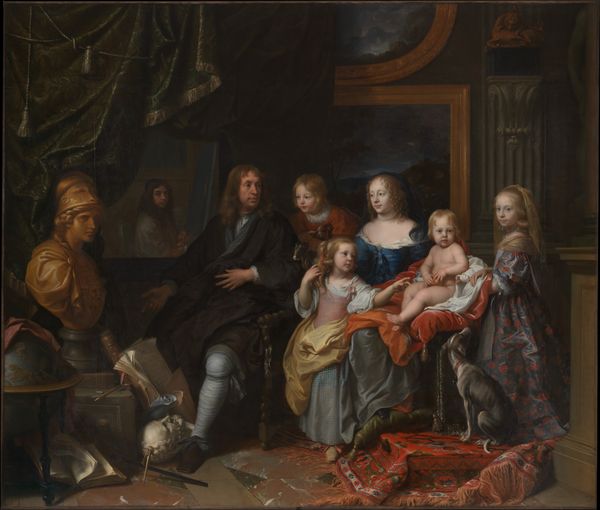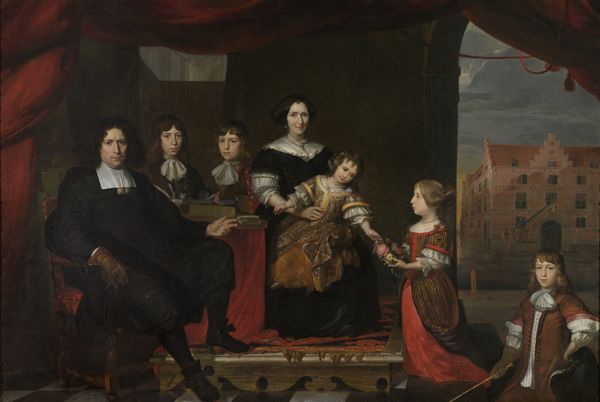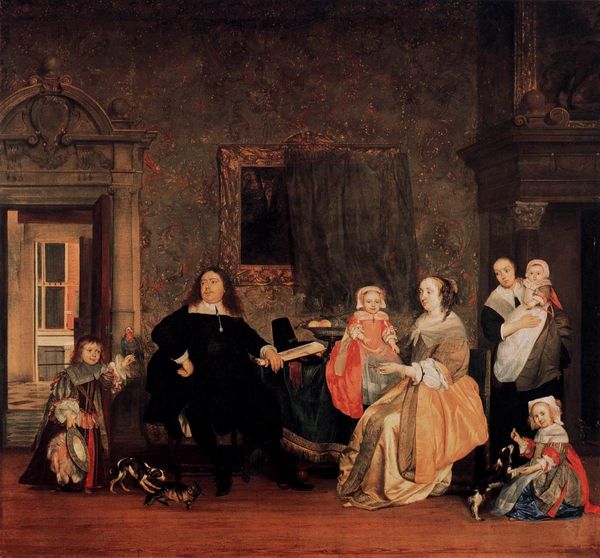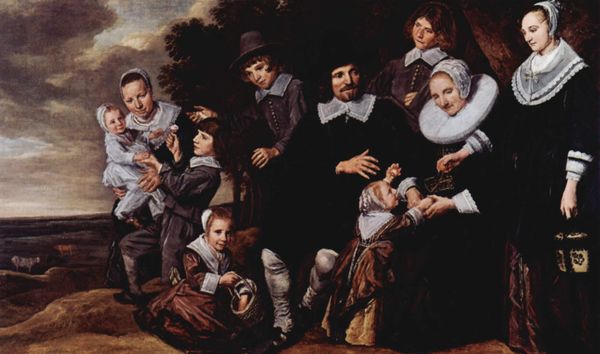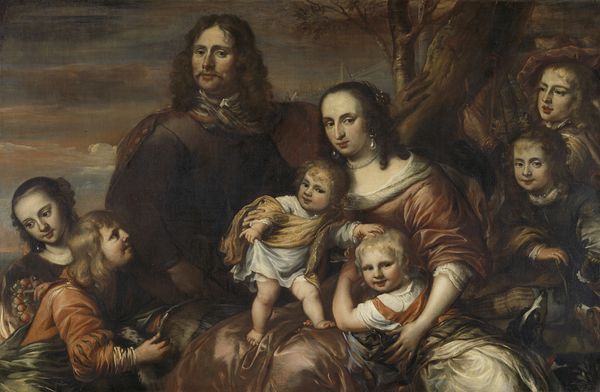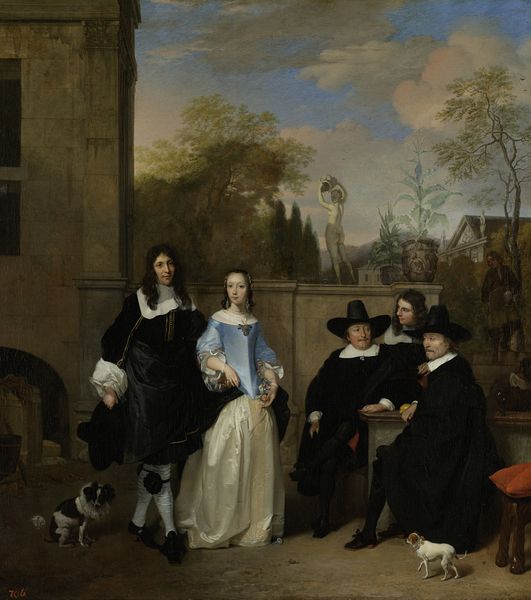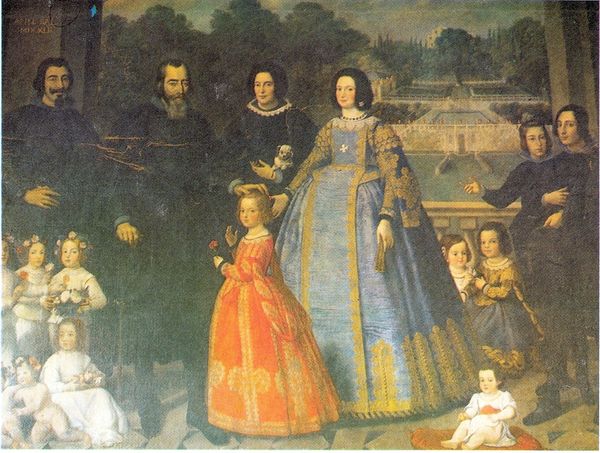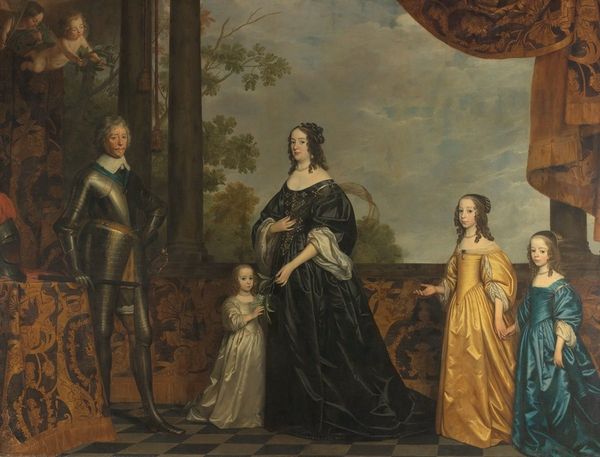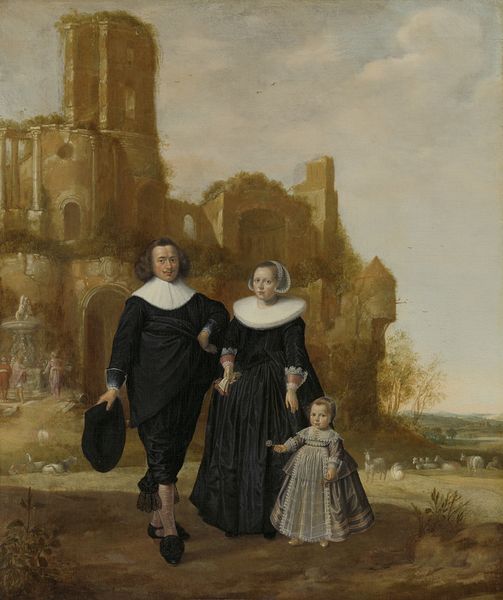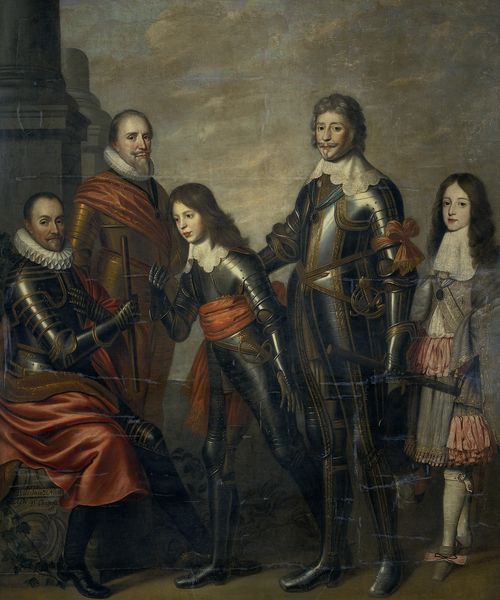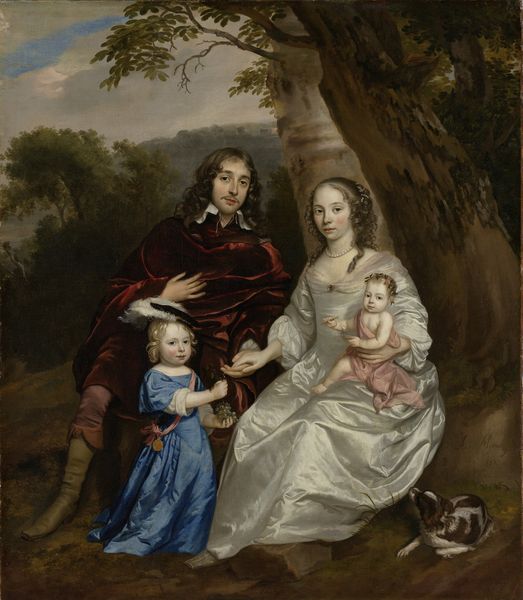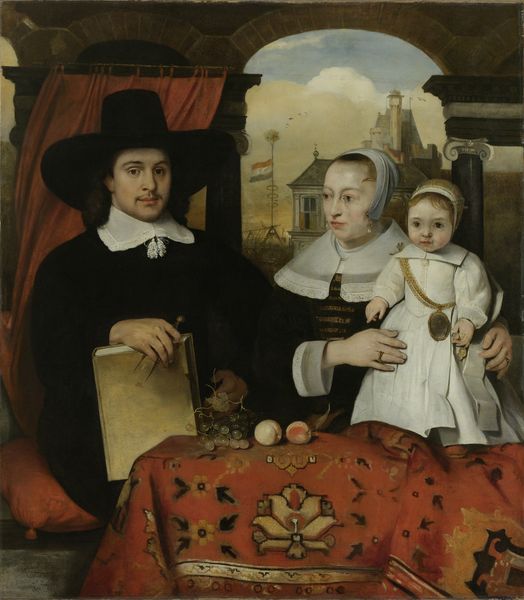
painting, oil-paint
#
portrait
#
baroque
#
dutch-golden-age
#
painting
#
oil-paint
#
dog
#
group-portraits
#
genre-painting
Dimensions: height 269 cm, width 406 cm, thickness 5.5 cm, weight 71 kg
Copyright: Rijks Museum: Open Domain
Editor: This oil painting, created in 1662 by Juriaen Jacobsz, is entitled "Michiel de Ruyter and his Family." It’s a large group portrait. The clothing strikes me, it speaks to immense wealth. What’s your read of this piece? Curator: Looking at the historical context, this is more than just a family portrait; it's a deliberate construction of public image. Michiel de Ruyter was a celebrated admiral. How does this image, strategically presented in its time, bolster his societal standing? Editor: You’re right. His wealth is visually on display, so I see this as communicating power. There's also the idealized background – nature and architecture perfectly combined. Was this typical of Dutch Golden Age portraiture? Curator: Yes, that carefully curated combination of cultivated landscape and classical architecture signified refinement. More importantly, how do elements like the family dog and de Ruyter’s stance challenge our contemporary understanding of familial power dynamics versus individual achievement during the Dutch Golden Age? Editor: The dog makes the scene seem so domestic, less staged and more relatable. As for his stance, he's front and center, looking directly at the viewer, as if asserting his authority. Curator: Exactly! And consider where this would have been displayed. Was it accessible to the general public or intended for a more exclusive audience? The public display impacts the message being delivered. Editor: This gives me a lot to think about in terms of intended audience and the messages portrayed through family and status symbols! Curator: Indeed. Reflecting on its visual and social facets expands how we interpret artworks, prompting dialogue on representation and socio-political influences.
Comments
No comments
Be the first to comment and join the conversation on the ultimate creative platform.

